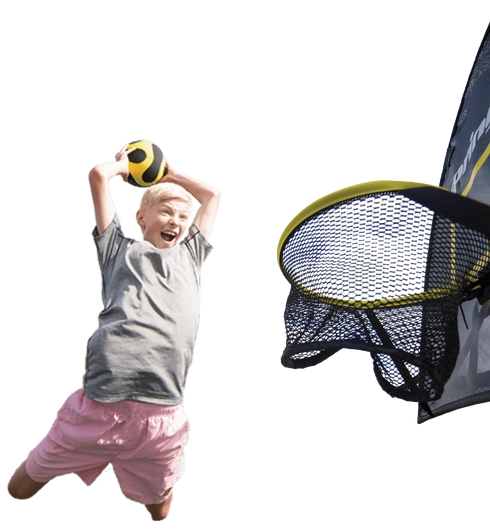10 Reasons Why Exercise Is the Best Way to Learn
min read

When it comes to our kids, we tend to think of their learning and mental development as a separate priority from their physical development. But did you know that your child’s ability to learn is hard-wired into their exercise routine and activity levels?
It’s true! The right physical activities not only stimulate the memory and learning centers of the brain, but also improve the connections between neurons and provide movement-based opportunities to acquire new skills. (Plus, when the activity is something fun, like bouncing on a trampoline, kids actually want to give it a try!)
Here are 10 reasons why exercise, play, and physical activity are the best way for your child to learn (and have fun)!
1 - Exercise helps you concentrate.
Research with school children showed that kids who took part in after-school sports saw a big bump in their ‘executive control’—that’s psych-talk for the ability to multi-task, ignore distractions, and retain information, which are all essential skills for being an effective learner.
2 - It also boosts memory!
The hippocampus—that’s the part of your brain responsible for memory and learning—is also the part of the brain that responds to aerobic exercise. It grows and performs better when you get your sweat on. Studies even show that learning a new language is easier with light exercise to support it. So next time your child needs to study for a Spanish test, consider flash cards on the trampoline.
3 - Physical activity stimulates brain growth in children.
There’s a lot of encouraging research that suggests regular exercise stimulates the generation of new brain cells, allowing our cells to build new connections and pathways. With children, aim for an hour of exercise per day to support their studies and cognitive development.
4 - It’s good for your mood (especially when you exercise outside)!
All kinds of exercise improve mental health, which creates better groundwork for positive learning experience. But—bonus!—studies show that when you exercise in a natural environment, you’re less likely to experience negative emotions and more likely to experience a mood boost. Going for a bounce on your trampoline in the leafy backyard shade is a great way to get in the right headspace before a day of school. (For more benefits to outdoor exercise, see our earlier blog on this topic!)
5 - Exercise helps the elderly stay mentally sharp.
It’s not just young learners who benefit from a good bout of cardiovascular activity. Doing short stints of light exercise 3 or 4 times a week is strongly linked with slowing cognitive decline, preventing dementia, and keeping the brain health and active. (Think of it as sudoku puzzles that also work out your body.) Trampoline bouncing is a great, low-impact activity that can be suitable for certain healthy seniors—after all, it’s a part of many physiotherapy regimes.
6 - It helps you pay attention better.
Thirty minutes of solid exercise—the kind that gets your heart racing and your body sweating— does wonders for the part of the brain responsible for attention span. After strenuous cardiovascular activity, the dorsolateral prefrontal cortex beefs up its ability to resist distractions and improve performance on tests of attention.
7 - Working out improves quality of sleep.
Being well-rested is important for memory and learning. Even a little bit of regular exercise in can help your body regulate its sleep schedule for better, more consistent, and more refreshing sleep. Fifteen minutes of bouncing on your Springfree Trampoline could be just the trick for the kids in the morning and when they get home from school. Just be careful not to get them riled up close to bedtime!
8 - Exercise stimulates connections between your neurons.
Researchers discovered that BDNF, a protein responsible for forming and strengthening new connections between the neurons in your brain, is released through exercise. This means that your brain forms and reinforce, new memories it gets rigorous exercise—and the same is true for your children. Make sure to round out their academic pursuits with physical activity to support their learning.
9 - Children are more engaged learners during outdoor play.
Studies show that when children learn through play activities in a natural environment, they are more motivated, focused and active. Plus, movement gives opportunities to practice certain lessons and skills, like counting bounces on the trampoline to know when to switch turns, or keeping track of time with a stopwatch.
10 - Your brain is a muscle like any other.
While mental exercises are good for developing brain function, your grey matter also benefits from exercise in the same way that your overall physical health does, from quality of sleep, to energy levels, to mood and to improved circulation of blood and oxygen. Given that 10 minutes of bouncing on a trampoline is the equivalent of a 30-minute workout, consider doing your brain a favour by bouncing your way to better health on a Springfree Trampoline!

